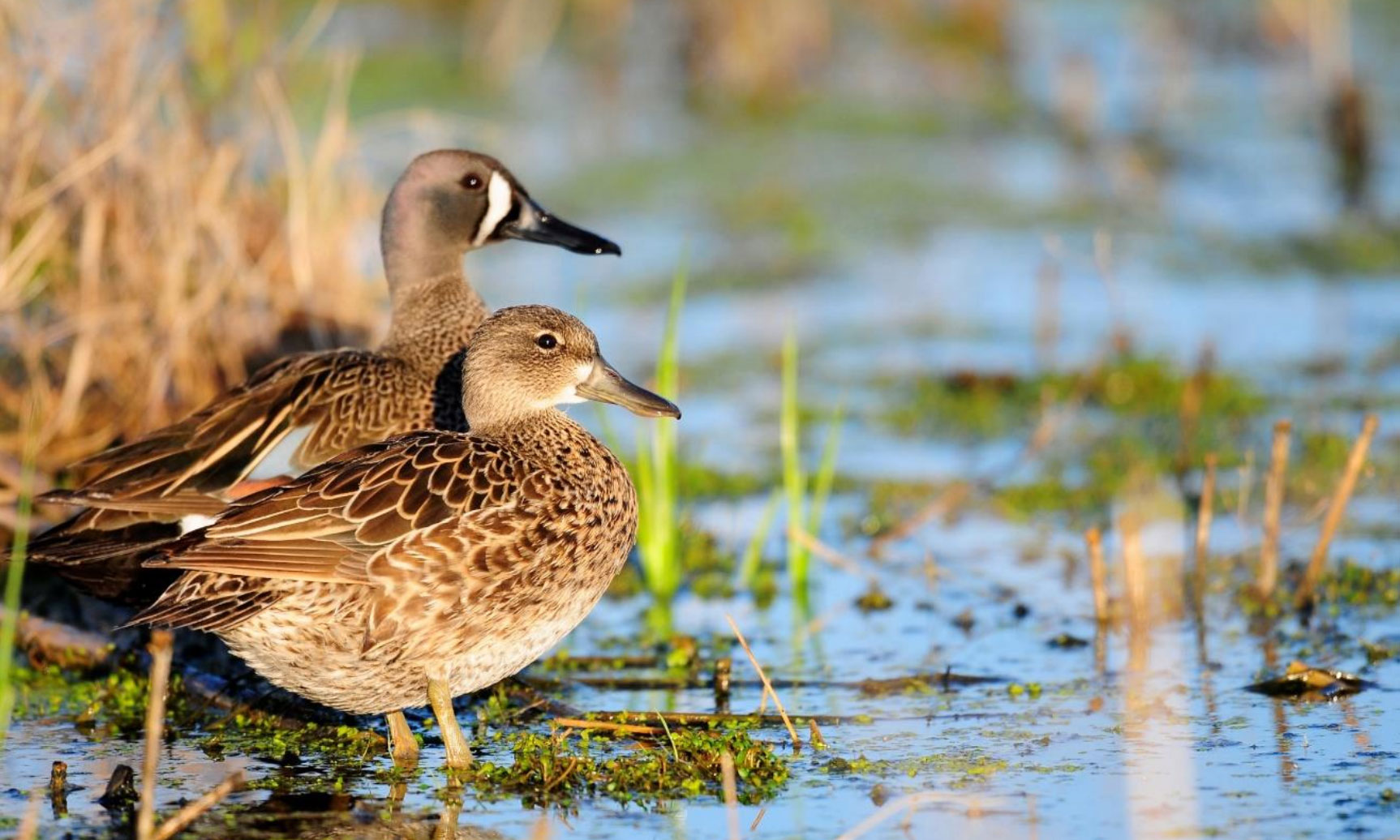We flew the waterfowl inventory on Thursday, December 7th and brrrrr… is it getting cold. Ice was forming on many of the refuges along both the Illinois and Mississippi rivers; however, we started running out of ice down around the Grafton area. Total ducks remained 6.5% above average for early December when we counted 218,600 ducks on the Illinois River, and ducks (520,880) were 24.5% above average on the Mississippi River. However, both the Illinois (32.4%) and Mississippi (29.2%) were down from last week’s estimates. I was hopeful this cold snap would push the last of the mallards into Illinois, Missouri, and Iowa, but after yesterday’s flight, it appeared as though our mallard numbers have already peaked, and we are on the downhill slide. Mallards (133,210) on the Illinois dropped 23.1% from last week; likewise, mallards (262,460) on the Mississippi River were down 34.8%. Although the duck numbers have declined, I am hopeful that the mallard hunters will enjoy some success as our refuges start to freeze; time will tell I guess.
Last week I had a few requests for aerial views of different species of waterfowl.
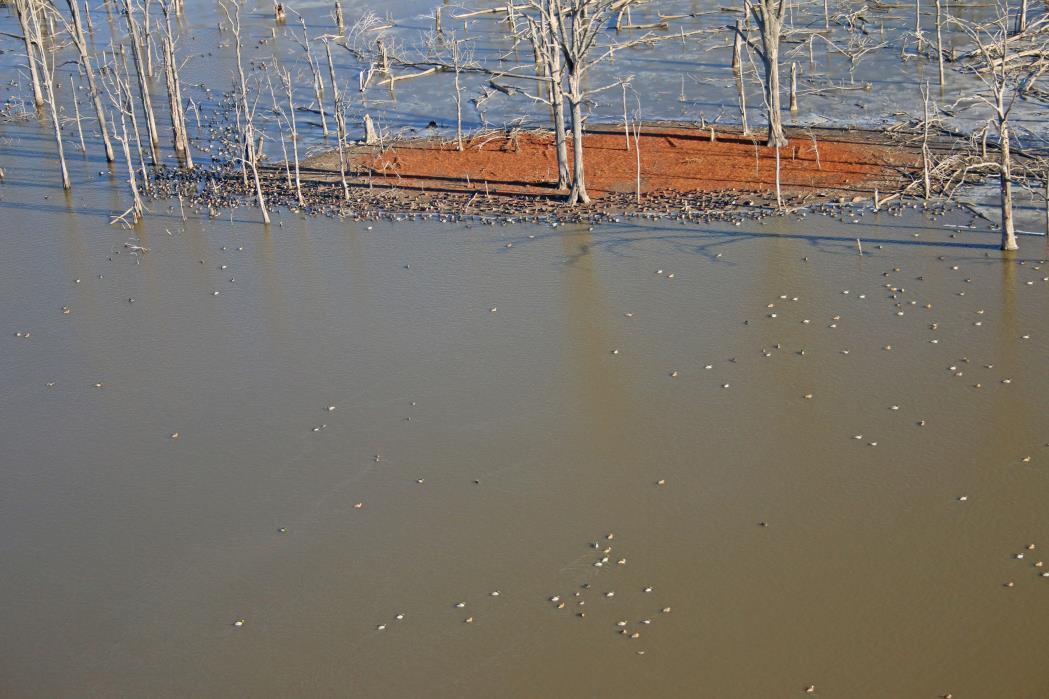
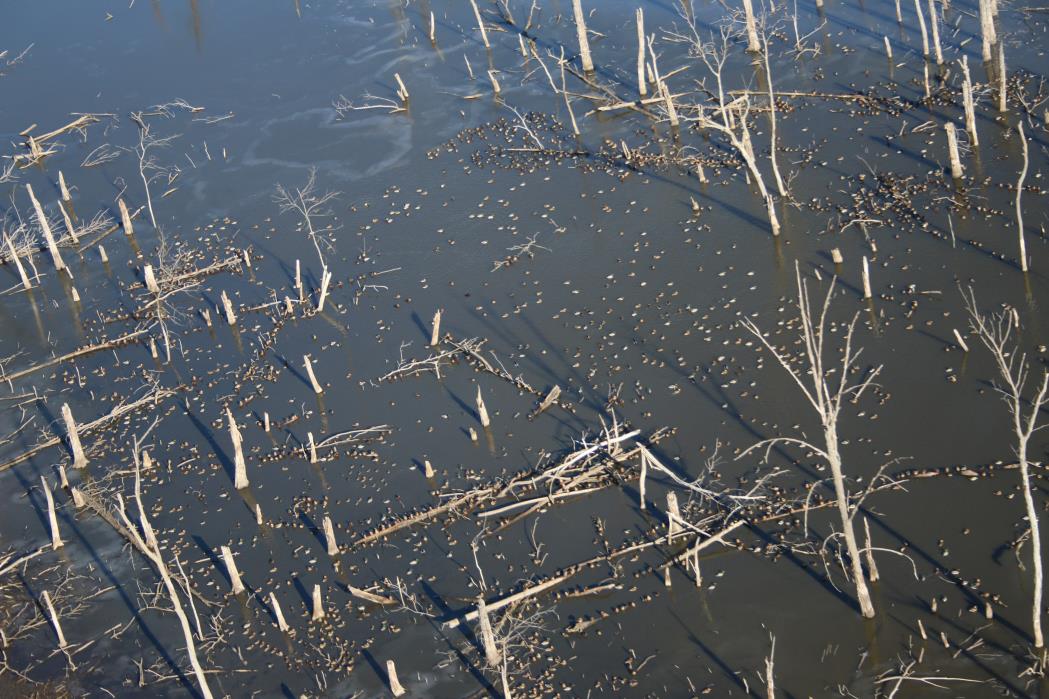
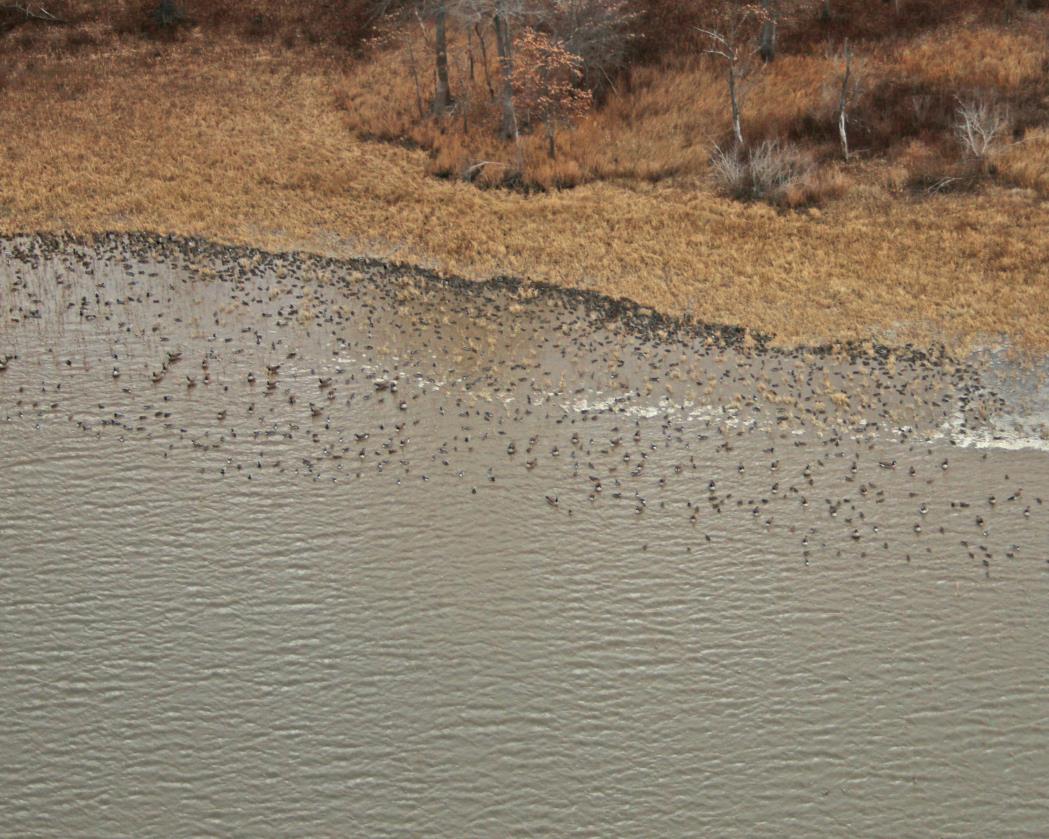
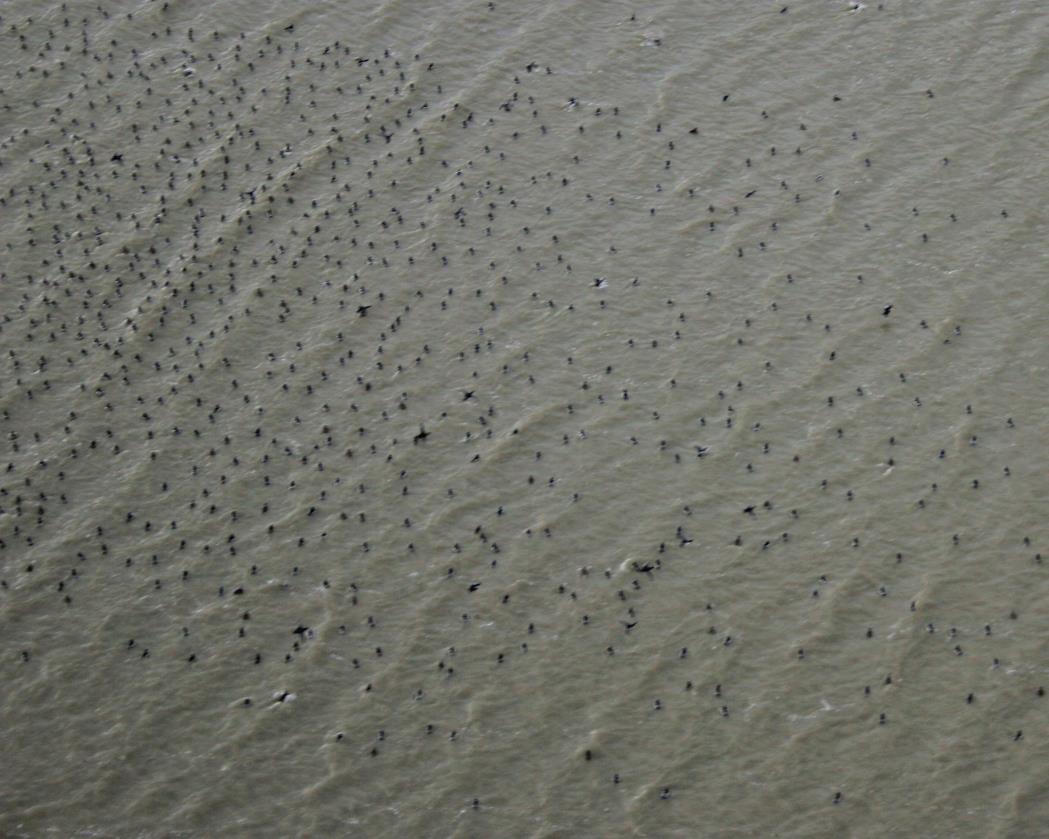
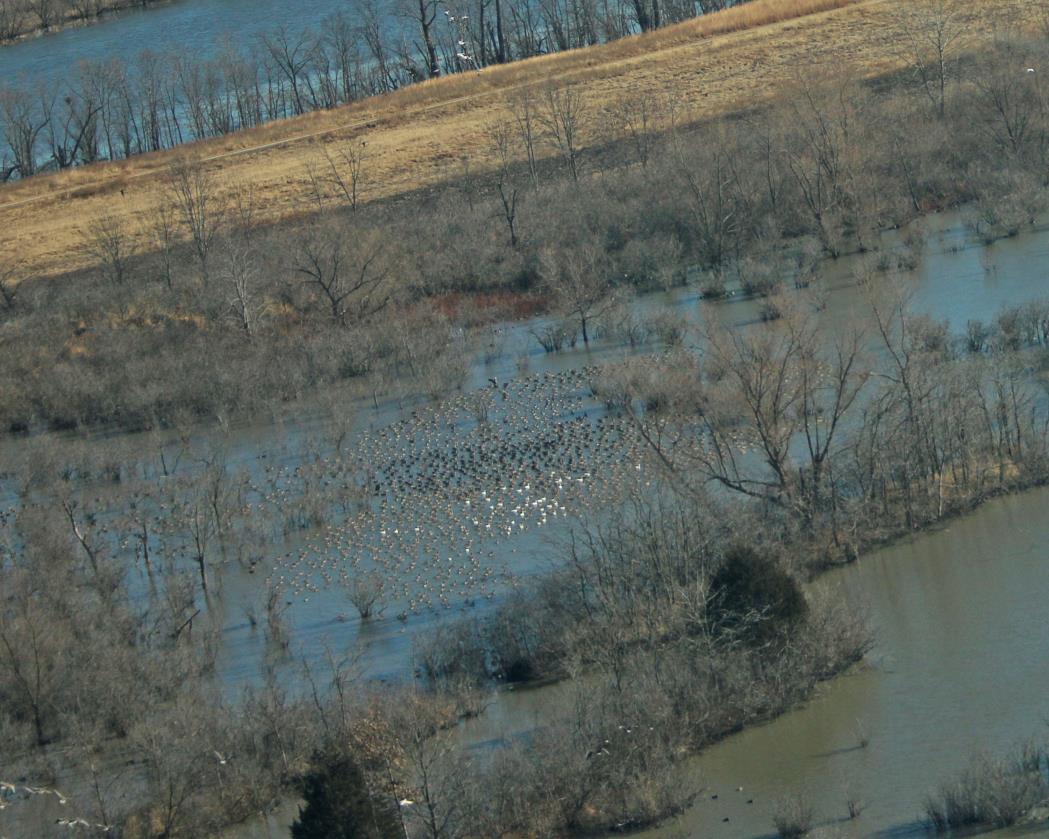
I hope you enjoy the aerial photographs!
Stay tuned for more updates next week…
